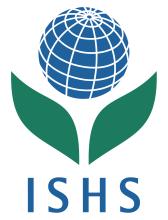Resource information
Vegetable production has an increasing importance in most of the Asian countries. The leader in production per capita is China followed by South Korea, North Korea and Vietnam. In Vietnam, vegetable production is at the moment on 4th place of all agricultural commodities. In the past, in Vietnam as in other South-East-Asian countries, the production of rice, sugar cane, cassava and maize often as monoculture was typical. The cropping pattern in Vietnam started to change into a multi-culture system in regions where also vegetables are cultivated – a welcome benefit for sustainability of the land use system. The cultivation area of all field crops increased from 2005 to 2009 with 5.4% while vegetable cultivation area increased with 30%, respectively. In the Red River Delta in North Vietnam the area for vegetable cultivation increased from 71 ha in 1990 to 219 ha in 2009, i.e., with 308% and the vegetable production with 373%. There are high potentials for further increasing vegetable production because of the increasing market demands caused by higher incomes, increasing number of tourists and possibilities for export. ‘Land Suitability Analysis and Evaluation’ in order to find out the appropriate land for the different horticultural crops is highly recommended to establish sustainable cultivation systems. In general, land suitability analysis considers the influences of physical, social, economic, infrastructure and environmental issues for horticultural crops. Following the result of the land analysis and evaluation it is also possible to identify limitations and input requirements for the sustainable production. This analysis has to be applied frequently, in particular in urban and periurban regions, where the vegetable area decreased, e.g., in the Red River Delta with 52% to 65 but also in rural areas where vegetable cultivation increased with 53%. Beside the potentials there are still constraints for sustainable vegetable cultivation. More effort is necessary in order to improve and stabilize the soil fertility, to introduce integrated cropping methods by appropriate use of mineral fertilizers and pesticides and to avoid their misuse. The latter seems to be very important because the cultivation area of all crops in Vietnam increased from 2000 to 2009 with 10.32% while chemical fertilizer use increased with 31.71%. In this regard reuse of bio-wastes preferable as compost for organic fertilization should be developed and improved. Also the very small farm size with 0.3-0.4 ha and 1.3 ha often with high fragmentation of less than 500 m2 is disturbing for sustainable vegetable cultivation. These small field plots cause difficulties for intensive farming such as irrigation, field care and organization of sustainable cropping patterns.



